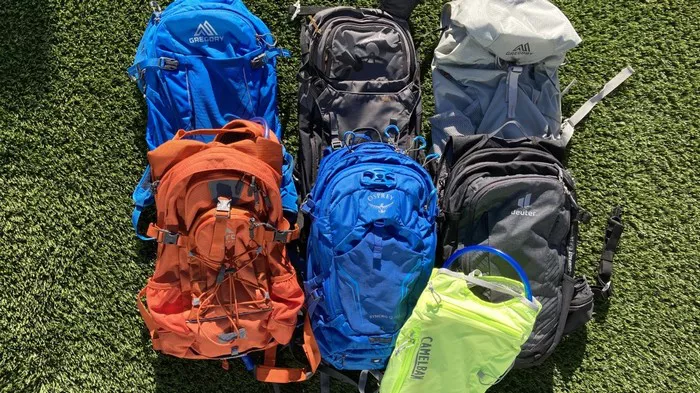Planning a two-week camping trip is an exciting adventure, but it requires careful packing. You need to consider the location, weather, and activities you plan to do. This guide will help you organize your packing list, ensuring you have everything you need for a comfortable and enjoyable experience in the great outdoors.
1. Camping Gear
Tent and Accessories
Tent: Choose a tent that fits your group size and offers protection from the elements. Look for features like waterproof material and good ventilation.
Ground Tarp: Protects the tent floor from rocks and moisture.
Tent Stakes and Guylines: Essential for securing your tent.
Repair Kit: Bring a repair kit for your tent in case of damage.
Sleeping Equipment
Sleeping Bag: Choose a sleeping bag rated for the lowest temperature you expect.
Sleeping Pad: Provides insulation and comfort.
Pillow: A travel pillow or a stuff sack filled with clothes can work well.
Camping Chairs
Portable Chairs: Comfortable chairs for sitting around the campfire.
2. Cooking Gear
Cooking Equipment
Portable Stove or Grill: Choose a lightweight, compact option.
Fuel Canister: Ensure you have enough fuel for your stove.
Cookware: Bring pots, pans, and utensils for cooking.
Cutting Board and Knife: Essential for food prep.
Eating Supplies
Plates and Bowls: Lightweight and durable options are best.
Cutlery: Bring forks, knives, and spoons.
Cups: Collapsible or lightweight cups work well.
Biodegradable Soap and Sponge: For washing dishes.
Food Storage
Cooler: A good cooler keeps perishable food fresh.
Dry Bags or Containers: Store non-perishable food securely.
Trash Bags: Leave no trace by packing out all trash.
3. Clothing
Layering System
Base Layer: Moisture-wicking shirts and long underwear.
Insulating Layer: Fleece or down jackets for warmth.
Outer Layer: Waterproof and breathable jackets to protect against rain and wind.
Bottoms
Hiking Pants: Quick-drying, durable pants are ideal.
Shorts: Comfortable shorts for warmer days.
Footwear
Hiking Boots: Sturdy and comfortable boots with good ankle support.
Camp Shoes: Lightweight sandals or slip-ons for relaxing at camp.
Wool or Synthetic Socks: Bring several pairs to keep your feet dry.
Accessories
Hat: A wide-brimmed hat for sun protection.
Gloves: Lightweight gloves for cooler evenings.
Buff or Scarf: Useful for protecting your neck and face from the sun or cold.
4. Personal Items
Toiletries
Biodegradable Soap: For washing yourself and dishes.
Toothbrush and Toothpaste: Travel-sized items work best.
Toilet Paper: Pack it out if necessary; consider a trowel for digging a cat hole.
Deodorant: Keep fresh on the trail.
First Aid Kit
Basic Supplies: Include band-aids, antiseptic wipes, pain relievers, and any personal medications.
Insect Repellent: Keep bugs at bay with a good repellent.
Sunscreen: Protect your skin from UV rays.
Personal Hygiene
Sanitation Wipes: Useful for quick clean-ups.
Hand Sanitizer: Essential for maintaining hygiene.
5. Navigation and Safety Gear
Navigation Tools
Map and Compass: Always have a physical map, even if you plan to use GPS.
GPS Device or Smartphone: For easier navigation.
Safety Equipment
Multi-tool or Knife: Handy for various tasks.
Headlamp or Flashlight: Bring extra batteries for reliability.
Whistle: Useful for signaling if you get lost.
Emergency Gear
Firestarter: Matches, lighter, or a firestarter kit.
Emergency Blanket: Compact and can provide warmth in an emergency.
6. Entertainment and Leisure
Activities
Books or E-Reader: For relaxing during downtime.
Playing Cards or Travel Games: Great for evenings around the campfire.
Camera or Smartphone: Capture memories of your trip.
Outdoor Gear
Fishing Gear: If fishing is on your agenda, bring your gear.
Hiking Poles: Useful for stability on challenging trails.
7. Food and Drinks
Meal Planning
Plan Your Meals: Decide on meals for each day to avoid packing excess food.
Snacks: Pack high-energy snacks like nuts, granola bars, and dried fruit.
Hydration
Water Bottles or Hydration Bladder: Keep hydrated while hiking.
Water Filter or Purification Tablets: Essential for treating water from natural sources.
8. Miscellaneous Items
Camping Essentials
Duct Tape: Always useful for quick repairs.
Rope or Paracord: Can be used for various tasks around camp.
Ziploc Bags: Useful for organizing and protecting items from moisture.
Backpack
Daypack or Backpack: A comfortable bag for carrying your gear during hikes.
Miscellaneous
Notebook and Pen: For jotting down notes or journaling your trip.
Binoculars: Great for birdwatching or enjoying scenic views.
9. Final Checklist
Before You Leave
Check the Weather: Be prepared for any weather conditions.
Test Your Gear: Make sure everything is functioning properly.
Leave No Trace Principles: Familiarize yourself with and follow Leave No Trace principles to protect nature.
Conclusion
Packing for a two-week camping trip may seem overwhelming, but with this detailed guide, you can prepare efficiently. Remember to tailor your packing list to your specific needs, activities, and the environment you’ll be exploring. With the right gear and supplies, you’ll be ready to enjoy an unforgettable adventure in the great outdoors. Happy camping!
Related topics:
- Best Campsites in the Lake District
- Top 10 Tent Brands in Canada
- What to Do on a Camping Trip with Friends

